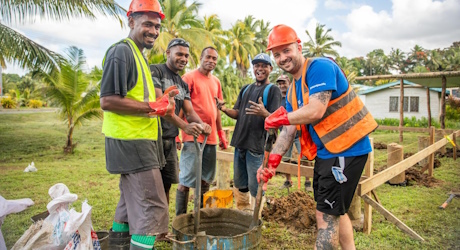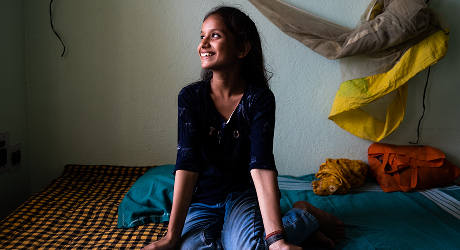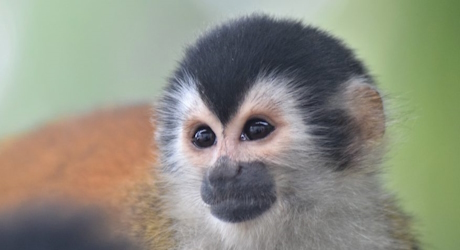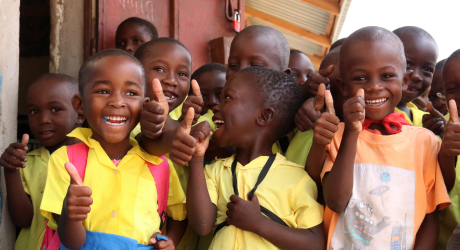Footprints Project
Since 2005, travelers like you have helped us change the world through micro-donations.
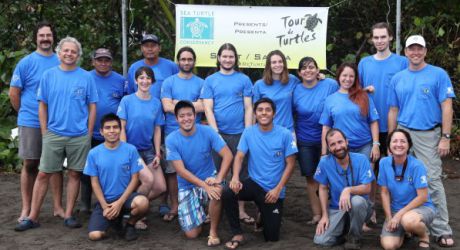
-
A total of
7959
Travelers
-
donated
$20001.59
(100% funded) -
to help improve
Environment
-
in
Costa Rica
Project Background
The 20-mile-long Tortuguero Beach, located on the north Caribbean coast of Costa Rica, hosts the largest green turtle rookery in the world, along with important populations of leatherback and hawksbill turtles. For over 55 years, Sea Turtle Conservancy has conducted an annual research and conservation program at Tortuguero, which has achieved phenomenal success at increasing sea turtle population levels and replacing the consumptive use of sea turtles with sustainable ecotourism.
Despite this fantastic history of achievement, all three turtle species nesting at this beach still face numerous threats. To ensure that efforts of the last five decades have not been in vain, STC must continuing it’s monitoring and conservation program, while addressing new threats to the sea turtle populations and their nesting habitat.
The sort of threats observed at STC’s research sites also persist at beaches throughout Latin America and the Caribbean. Through STC’s annual Research Assistantship Program, we are training aspiring biologists and resource managers in order to share the lessons learned by STC to build conservation capacity in the region and train the next generation of sea turtle biologists. Another critical element of the project is an ongoing program to create and maintain a sustainable eco-tourism program that directly benefits local communities and minimizes any harmful impacts on turtle nesting.
Project Objectives
This project was carried out during the 2018 leatherback and green turtle nesting seasons in Tortuguero, Costa Rica. Financial support from World Nomads and the Footprints Network provided essential resources to carry out a program with the following primary goals:
- Train aspiring biologists from Latin American and Caribbean nations in proven sea turtle monitoring and conservation techniques.
- Monitor three sea turtle species nesting at Tortuguero and determine long-term population trends and survival threats.
- Reduce human impacts on Tortuguero’s sea turtles and the coastal and marine environments critical to the survival of these species.
- Work with local communities and vendors to put in place and maintain eco-tourism opportunities that attract conservation-minded tourists who want to experience sea turtles in the wild.
Project Outcomes
Objective 1: Train aspiring biologists
STC’s research and monitoring program in Tortuguero is an invaluable training tool for young biologists and future conservationists from around the world. While in Tortuguero, the Research Assistants (RAs) receive hands-on training from STC’s experienced turtle biologists as they directly help implement the rigorous research protocol. Hundreds of people have participated in STC’s RA program at Tortuguero and have gone on to create their own conservation initiatives in their home countries.
Nineteen (19) students have participated in the Research Assistantship (RA) program so far during 2018, hailing from Mexico, Brazil, Uruguay, Chile, Spain, Trinidad & Tobago, Colombia, France, England, Ireland and the United States. An additional 8 (total of 27) will participate before the end of the year. More than half of the RAs this year were from Latin America or the Wider Caribbean, which is higher than any previous RA season. It is crucial for STC to train RAs from these regions because Tortuguero’s sea turtles migrate to those associated waters. We plan to continue to maintain our recruiting efforts in the Latin American region to ensure effective capacity build up in Latin American countries.
STC also conducted its Junior RA program, through which local Tortuguero high school students were trained to assist the RAs with night-time turtle monitoring and recording data. A total of five local students between 12 and 17 years old participated in the program this year. Every Friday and Saturday night from 8 p.m. to 10 p.m., the Junior RAs went on patrol with the RAs to look for nesting sea turtles on the beach, to measure their shells and to record data into the field book. From July to August, the Junior RAs recorded data on 37 green turtles and two hawksbill turtles. They also organized educational activities for children and assisted with implementing STC’s Tour de Turtles program this year. STC’s Junior RA program gives Tortuguero’s youth a constructive way to spend their weekend evenings while also inspiring them to pursue a career in conservation.
Objective 2: Monitoring threats
A rigorous research and monitoring program was carried out at the Tortuguero nesting beach throughout the leatherback and green turtle nesting seasons. The leatherback season ran from March through June and the green turtle season runs from June through December. STC added a new group of research assistants to monitor hawksbill nests this year as well, which takes place from May through June.
The 2018 leatherback season’s productivity was similar to 2017. Along the 29 km stretch of beach in Tortuguero, there were 157 leatherback nests; 41 of those nests were found along the 8 km section of beach that STC monitors. Of those nests, there was a 40.8% hatching success. Although the green turtle nesting season is not yet complete, current nesting numbers are at their lowest point in the last decade. At the end of August, there were 5,340 green turtle nests recorded throughout STC’s study area. STC is concerned about these results and will continue to monitor the situation in an attempt to understand why nesting numbers were so low.
STC did receive some good news this season, however. STC recorded 50 hawksbill nests throughout its study area, which is the highest nesting season recorded for hawksbills in the history of the Tortuguero program. We hope to see similar results in the future. STC also recorded a loggerhead nest this year, which was the first loggerhead nest recorded in STC’s study area in three years.
Objective 3: Reduce Human Impact
STC continued to reduce human impacts on Tortuguero’s sea turtles through the implementation of its annual monitoring program, which has been developed to facilitate an accurate evaluation of the impact of different threats and allows threat trends to be rapidly identified so that appropriate measures can be taken. For example, STC noticed that hawksbill nests were poached at an alarming rate last year. In response, STC added an RA group that focused on monitoring hawksbill nesting this year, which has allowed us to have a heavier presence on the beach, resulting in a reduction of both poaching and hawksbill nest predation.
In 2018, 18 leatherback nests, two hawksbill nests and 89 green turtle nests were poached, where the eggs were illegally taken, along the 29 km of Tortuguero Beach. Non-anthropogenic threats were high this year; a total of 108 nests were predated so far, 36 of which were predated by dogs and 72 by raccoons. Several turtles were also killed by jaguars this year (as captured in photo to left); 11 leatherbacks, 8 hawksbills and 18 green turtles were killed by jaguars so far in 2018. STC does not interfere with natural predation such as that being carried out by jaguars; however, we do work closely with the community to address dog predation by conducting spay and neutering programs and community outreach to encourage more responsible pet ownership.
Objective 4: Work with Local Communities
More than 117,000 tourists visit Tortuguero each year to witness sea turtles nesting. STC takes every opportunity to inspire environmental stewardship that we hope will result in the long-term protection and recovery of sea turtles.
STC continued to supervise the Sea Turtle Spotters program this year. STC trained spotters to search for nesting females on the beach. When they find a turtle that is about to nest, they communicated with nearby guides who then take a group of tourists to witness the turtle nesting on a designated trail behind the beach. This strategy allows for tourists to passively interact with Tortuguero’s sea turtles at a safe distance while reducing the impact on the turtles.
STC also conducted several activities within the Tortuguero community to inspire conservation action. On August 1, STC organized a 4 km-long beach clean-up involving 52 students and teachers from a local high school. By collaborating with local businesses, Tortuguero National Park, the police department and the community recycling plant, STC and the beach clean-up participants collected more than 186 kg of trash from the beach, which was separated for recycling at the Tortuguero recycling plant. STC also continued its eco-labeling program, where STC “rated” local businesses based on their efforts to reduce single-use plastic consumption.
In late August, STC placed satellite transmitters on two green sea turtles and publicly released them outside the Tortuguero station as part of its annual Tour de Turtles program. Hundreds of tourists and community members watched green sea turtles Vida and Cordelia crawl back into the ocean while STC members interacted with them and educated them about the importance of satellite tracking for sea turtle conservation. Providing moments like these is a crucial component of inspiring stewardship and conservation; STC believes that education is one of the most important tools for the long-term recovery of sea turtles.
What Next?
The work at Tortuguero represents a long-term commitment by STC to monitor and protect this critical nesting beach in partnership with the local community. We foresee the program continuing indefinitely as we continue to protect and recover this globally important population of green turtles.
Can I Visit the Project?
Tortuguero, Costa Rica, is a world-renowned destination for ecotourism and turtle-watching. STC operates a fully-functioning biological field station that regularly hosts up to 25 people. We would be happy to host World Nomads staff or clients on a visit to Tortuguero to observe and participate in the turtle research program.
Traveling soon? When you buy travel insurance with us, you can make a contribution towards a cause you care about.
Get a quote